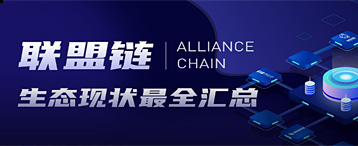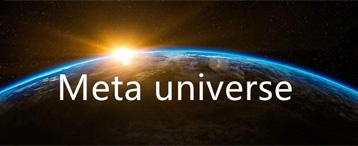-
Difference between blockchain and distributed ledger technology
 linkweb3
linkweb3 2023-02-20
2023-02-20 4055
4055 Tech
Tech
-
Summary:Difference between blockchain and distributed ledger technology. Blockchain and distributed classification technologies are two technologies that are often mentioned, and their development has attracted more and more attention and research.
Blockchain and distributed classification technologies are two technologies that are often mentioned, and their development has attracted more and more attention and research. Although the two have similarities in some ways, their core ideas and application scenarios are very different. This article will explore the differences between blockchain and distributed classification account technology.
The definition and application of blockchain technology
Blockchain technology is a distributed database technology that stored data in a series of blocks and stored data on many nodes in the network in order to ensure the security and reliability of the data. Blockchain technology was originally used for cryptocurrency transactions, such as Bitcoin. However, with the development of technology, the blockchain has gradually been applied to many other fields, such as financial services, medical care, and the Internet of Things.
Blockchain technology has three core concepts:
Distributed: Data storage on many nodes in the network, not concentrated in a central database.
Consensus mechanism: Each node in the blockchain network needs to be reached to ensure that each node on the network has the same data.
Do not tampered with: Blockchain technology uses cryptography technology to protect the integrity of data and prevent data from being tampered with.
The advantage of blockchain technology lies in its decentralization characteristics. This means that no central institution or individual can control the network, thereby ensuring the security and transparency of data. In addition, blockchain technology uses cryptographic technology to protect the integrity and confidentiality of data, which makes blockchain technology apply to many scenarios, such as financial transactions, digital authentication, and supply chain management.
The definition and application of distributed classification account technology
Distributed classification account technology is also a distributed database technology that distributes data to many nodes in the network, so that each node can independently verify the accuracy of the data. Unlike the blockchain, distributed classification account technology usually does not use a consensus mechanism or cannot be tampered with.
The advantage of distributed classification accounts is that it can improve the security and reliability of data. Because the data is stored on multiple nodes in the network, this means that even if some nodes fail, the data can still be obtained on other nodes, and it can be rewarded by replication and backup.
Distributed classification account technology has been widely used in many fields, such as financial services, the Internet of Things, and supply chain management. Unlike the blockchain, distributed classification account technology usually does not require decentralization and consensus mechanism, so it is more suitable for some simpler scenarios, such as traditional database management and data backup.
Although distributed classification ledger technology is not as decentralized and unable to tampered with blockchain technology, it can still improve the security and reliability of data, and has better flexibility than traditional centralized databases than traditional centralized databases And scalability. In addition, distributed classification ledger technology is usually easier to deploy and maintain, because they do not need to conduct consensus mechanisms and miners like blockchain.
The difference between blockchain and distributed classification account technology
Although there are many similarities between blockchain and distributed classification ledger technology, the key difference between them is its core concept and application scenario. Blockchain technology emphasizes decentralization, consensus mechanism and non -tampering, and is suitable for scenarios that need to ensure data security and reliability. The distributed classification ledger technology emphasizes the distribution, replication and backup of data, and is applicable to scenarios that need to improve data security and reliability.
Specifically, blockchain technology has the following characteristics:
Decentralization: There is no central institution or individual control network in the blockchain network.
Consensus mechanism: Each node in the blockchain network needs to reach consensus to ensure that each node on the network has the same data.
Do not tampered with: Blockchain technology uses cryptography technology to protect the integrity of data and prevent data from being tampered with.
High degree of security: Due to the decentralization of data, consensus mechanism and non -tampering, blockchain technology is usually safer than traditional databases.
Application scenario: Blockchain technology is suitable for scenarios that require data security and reliability, such as financial transactions, digital authentication, and supply chain management.
The distributed classification account technology has the following characteristics:
Distributed: Data storage on many nodes in the network, not concentrated in a central database.
Data replication and backup: to improve the reliability and security of data by copying and backup.
Flexibility and scalability: distributed classification ledger technology is usually more flexible and scalable than blockchain technology.
The differences between blockchain and traditional distributed systems are mainly reflected in:
The blockchain adopts a decentralized network structure, while the traditional distributed system adopts a central or partial structure.
The nodes in the blockchain reached an agreement through the consensus algorithm, while the nodes in the traditional distributed system usually use the timestamp -based consistent algorithm.
The data sharing in the blockchain adopts a shared ledger, while the traditional distributed system usually uses a shared memory method.
Of course, there are still many differences between blockchain and traditional distributed systems, such as higher security of blockchain, which can achieve anonymous transactions. However, these differences have also led to some restrictions on blockchain technology, such as slow transaction speed, high energy consumption, large storage, and so on. Therefore, in order to better apply blockchain technology, we need to understand the differences between the blockchain and the traditional distributed system, and choose the appropriate technical solution according to different needs.
The difference between blockchain and traditional distributed systems also:
Different communication methods between nodes
In traditional distributed systems, communication between nodes usually uses a remote process call (RPC), that is, one node sends a request to another node and wait for response. However, in the blockchain, the point -to -point (P2P) method is usually used to communicate between nodes, that is, all nodes are equal. There are no primary and secondary divisions. You can send messages between nodes without waiting for response.
Data storage methods are different
In the traditional distributed system, data is usually stored in the memory or disk of the node, but in the blockchain, the data is stored in the block, and each node maintains a complete book copy. Therefore The traditional distributed system is much larger.
Different access to ledger
In traditional distributed systems, access data usually requires authentication and authorization, and in the blockchain, the ledger is public, and anyone can view the transaction records in the ledger. However, for some private transaction records, encryption technology and permissions can be used to ensure privacy.
In general, the blockchain and traditional distributed systems have differences in design ideas, node structure, consensus algorithm, data sharing, communication methods between nodes, data storage methods, and account access permissions. These differences not only lead to the particularity of the blockchain technology, but also bring some new challenges and opportunities to the application of the blockchain. Therefore, we need to choose the appropriate technical solution according to specific needs in order to better apply blockchain technology.
Disclaimer:As an open information publishing platform, shilian only represents the author's personal views and has nothing to do with shilian. If the article, picture, audio or video contains infringement, violation or other inappropriate remarks, please provide relevant materials and send it to: 2785592653@qq.com.
Hint:The information provided on this site does not represent any investment suggestion. Investment is risky, and you must be cautious when entering the market.
ShilianFan group:Provide the latest hot news, airdrop candy, red envelopes and other benefits, WeChat: rtt4322.
















